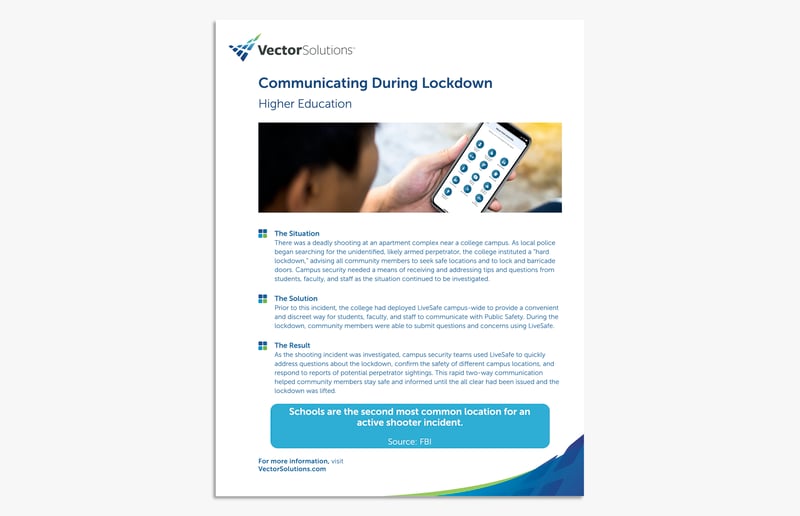Using Vector LiveSafe for Campus Drills & Exercises
Drills and exercises are essential components of every school’s incident preparedness program. According to SchoolSafety.gov, a joint initiative by the U.S. Department of Homeland Security (DHS), U.S. Department of Education (ED), U.S. Department of Justice (DOJ), and the U.S. Department of Health and Human Services (HHS), training, exercises, and drills prepare students, faculty, and staff for potential emergencies in a low-risk, cost-effective environment. These exercises are also an important way for institutions to assess their safety procedures and identify potential gaps or areas for improvement.
During safety drills (and the real events they are mimicking), communication is key – and Vector LiveSafe can help. Use this month’s Toolkit to learn more about how Vector LiveSafe can support your institution during safety drills and exercises.
Safety Tools

Vector LiveSafe Drill & Exercise Punch List presents the five steps of drill preparation and execution and indicates how Vector LiveSafe can be incorporated into each step.
Share this Punch List with your institution’s Vector LiveSafe Administrators and security team members so they are prepared to use Vector LiveSafe to plan and execute safety exercises.

Recent LiveSafe blogs explain the role and value of risk intelligence and how mobile safety tools such as Vector LiveSafe help organizations effectively communicate and mitigate risk.
Read and share these blogs to help administrators and security team members understand how Vector LiveSafe can support your institution’s safety before, during, and after drills and active incidents.

LiveSafe safety Use Cases provide real client examples of LiveSafe use during drills and active incidents.
Share and discuss examples of LiveSafe usage to give administrators and campus security teams insight into how LiveSafe can be used during safety drills and incidents.

Broadcast Check-In and How To Handout and Video demonstrate how to send a Broadcast Check-In message to all or some members of your community.
Share this video and handout with LiveSafe administrators to ensure that they know how to check in with students, faculty, and staff during an emergency.
Tips to Protect Your Institution with Vector LiveSafe

-
Need to remind community members of safety exercise procedures? Leverage a nationally-known preparedness event (like the Great Shake Out or National Preparedness Month) to garner engagement.
-
Upload comprehensive safety protocols and policies (ex: evacuation procedures and locations of medical kits) to the “Resources” section of the Vector LiveSafe Mobile Application (in PDF or URL format) so that they can be quickly accessed by students, faculty, and staff during drills or emergencies.
-
Before a drill or exercise is conducted, send students, faculty, and staff a Broadcast message with a reminder about how to use Tip Submit and Broadcast Check-In to stay safe during incidents.
-
Try to get members of your population to volunteer as “extras” for full-scale functional exercises.
-
Use new student orientation as an opportunity to educate your community about how your institution uses Vector LiveSafe for drills and what will be expected of them.
-1.png)
